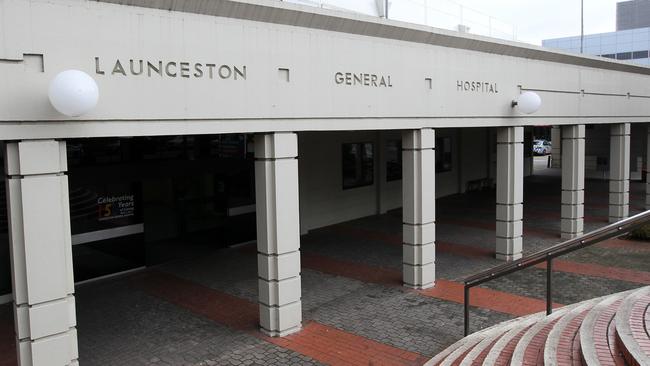Baby died after traumatic birth following ‘poor clinical decision-making’ at Launceston General Hospital
A coroner has criticised the management of a baby’s breech delivery at a Tasmanian hospital which led to his tragic death just two weeks later.
Police & Courts
Don't miss out on the headlines from Police & Courts. Followed categories will be added to My News.
THE tragic death of a two-week-old baby from a brain injury has been linked to “poor clinical decision-making” at Launceston General Hospital, following his traumatic birth in breech position.
The coronial findings, handed down on Wednesday, is the latest in a series of reports criticising the hospital over deaths that have taken place under its watch.
Coroner Simon Cooper said the baby, given the pseudonym of “KN” in his findings, died in November 2019 from a hypoxic brain injury – caused by lack of oxygen to the brain – due to his traumatic birth.
Mr Cooper said the mother’s pregnancy had been “uneventful”, but was admitted to LGH for an emergency caesarean section in the early stages of labour when the baby was in the breech position.
But after an epidural was administered, her water’s broke, with the baby’s feet and legs on view.
An obstetrician unsuccessfully tried to deliver the baby, calling in help from another specialist – attempting “various manoeuvres” before a caesarean section was undertaken to free up the baby’s arms and head.
The child was born vaginally soon after, but critically unwell due to the lack of oxygen he’d suffered during birth, spending the next 15 minutes under resuscitation.

The baby was taken to the neonatal intensive care unit and flown to the Royal Hobart Hospital in the early hours of the next day.
A forensic pathologist said a contributing factor to the baby’s death was myotonic dystrophy type I – a type of muscular dystrophy.
A specialist in obstetrics and gynaecology, Jonathan Nettle, who provided a report to the coroner said staff hadn’t conducted a “clear clinical assessment” of whether a vaginal breech birth would be suitable.
He said there had been a timeframe when it would have been “relatively straightforward” caesarean section, and the baby’s birth had been a “difficult clinical situation” apparently “made worse by poor clinical decision-making which did not adhere to standard relevant guidelines”.
“There were multiple opportunities presented to staff present to take an alternative course of action that would have likely avoided the final outcome,” Dr Nettle said.
The coroner said the LGH planned to invest in a simple ultrasound unit for midwives and medical staff to confirm foetal presentation.
Mr Cooper found the baby’s birth had been “mismanaged” at LGH, with “no hope of survival” after suffering the hypoxic brain injury during delivery.
Peter Renshaw, LGH executive director of medical services, acknowledged the “deeply distressing nature of the case” and the coroner’s comments.
“Unfortunately in this case, the baby was not recognised to be presenting as a breech until the mother was in labour, resulting in complications in the delivery of the baby,” Dr Renshaw said.
“The Launceston General Hospital reviewed the case and has introduced a quick scan at the end of pregnancy where there is any doubt about the baby’s presentation.”





